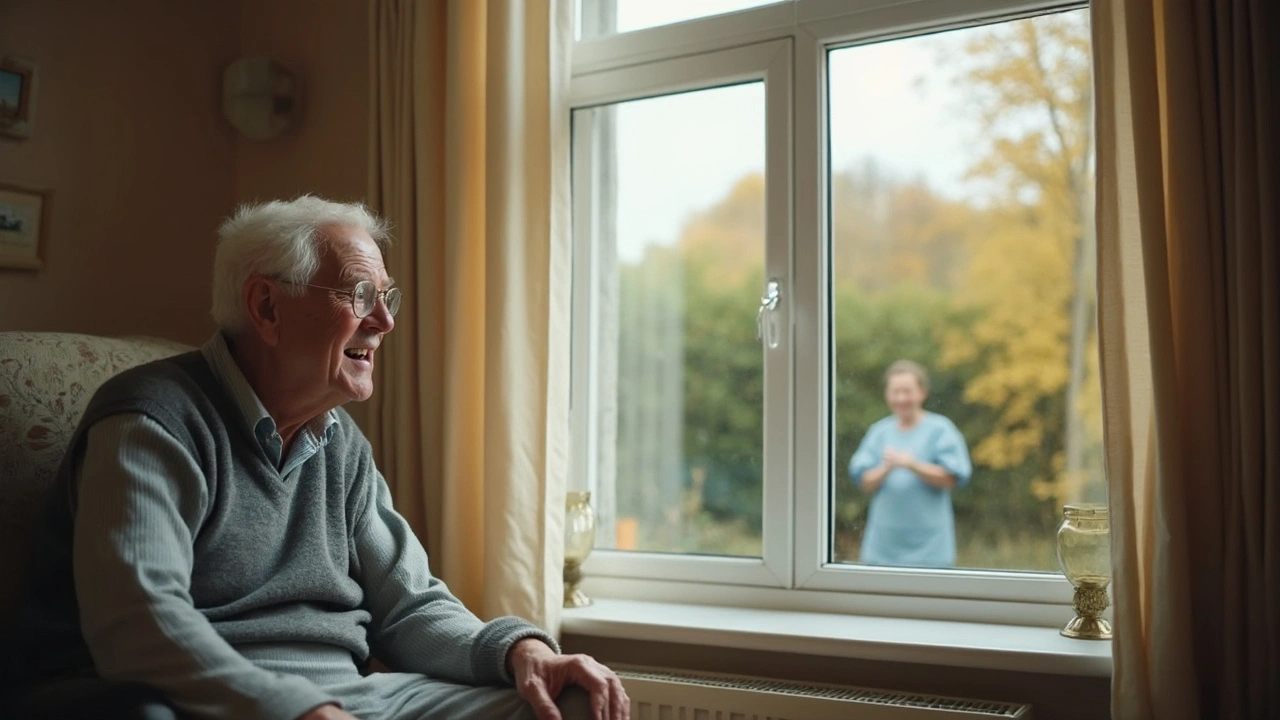The first wave of COVID-19 battered American nursing homes in 2020 so hard that nearly a third of all deaths at the start of the pandemic involved residents or staff. That’s not just a startling statistic—it’s a wakeup call to everyone who cares about the elderly. Infection control is serious business in nursing homes, not just because of global pandemics, but because every cough, cut, or fever could lead to something much more dangerous among fragile residents. It doesn’t take a viral outbreak to turn a nursing facility upside down; a single norovirus or MRSA case can do plenty of damage on its own. If you’ve ever stepped inside a modern nursing home, you can feel the tension: hand sanitizer on every wall, silver-haired residents shuffling with walkers, overworked nurses with clipboards, always alert for the first sign of illness. Why is this vigilance so essential? Because the stakes in these halls are utterly different: we’re talking about a population that’s not only older, but also sicker and more vulnerable. Year after year, infection control remains the quiet, unsung hero that gives families peace of mind—and staff hope that they won’t bring danger home at the end of a shift.
Why Are Nursing Homes So Vulnerable to Infections?
Walk into any nursing home and you’ll see a mix of conditions that create the perfect setup for germs to spread. Most residents are in close quarters—sharing dining halls, therapy rooms, and sometimes even bedrooms. Unlike a typical family home, these places house people with weaker immune systems, lots of chronic conditions, and a constant flow of staff and visitors. The U.S. Centers for Disease Control and Prevention (CDC) says up to 3 million infections hit long-term care facilities every year in the United States alone. Why? Many residents can’t easily wash their own hands or remember to cover their mouths. Some rely on ventilators or indwelling catheters, which are known hotspots for bacteria. Staff, even when they’re careful, often rush from one patient to another, touching dozens of door handles, call buttons, and medication carts in a single shift.
The physical design of many nursing homes adds to the risk. Think double-occupancy rooms, shared bathrooms, and high-touch communal areas. Aerosolized viruses—like flu—travel easily across these spaces. Special risks come from seasonal visitors, such as family gatherings during holidays, which can introduce flu or RSV to residents who have little defense. While basic infections like UTIs and skin sores can escalate dangerously, outbreaks of lesser-known bugs like Clostridioides difficile (C. diff) happen more than you might think, causing months of disruption, extra cleaning, and sometimes, long-term complications for frail seniors.
According to a 2022 study in JAMA, the infection rate for pneumonia in U.S. nursing homes is nearly 1 case per 100 residents each month—and pneumonia is just one of the top five culprits. Pressure ulcers, invasive procedures, and even poor ventilation all add up. Wondering why infection control is such a big deal? It’s not only about the health of those inside but also about protecting the community and hospital system nearby, since outbreaks don’t respect the boundaries of a facility. Last winter, one New Jersey nursing home had nine separate flu outbreaks in just three months, showing how quickly things can spiral when vigilance slips.
The Cost of Poor Infection Control—Lives, Money, and Staff Morale
No one forgets the headlines: “Nursing home outbreaks claim dozens.” Behind every headline are families who were counting on protection for their loved ones, and staff who carry the weight of every misstep. Poor infection control doesn’t just risk illness; it can lead to death, lawsuits, and even the closure of entire facilities. According to the CDC, healthcare-associated infections (HAIs) lead to an estimated 380,000 deaths each year among long-term care residents in the U.S. That doesn’t even count how many people end up hospitalized, sometimes permanently disabled, due to preventable infections.
The money side is a gut punch too. Treating infections drives costs sky-high, especially when outbreaks demand expensive broad-spectrum antibiotics, extra hospital transfers, or the hiring of agency staff. A case of C. diff, for example, can run up a bill of $10,000 per resident—multiply that by the number of infected patients and it’s easy to see why some homes face financial collapse after big outbreaks. Plus, insurance premiums jump, and in worst cases, fines or even criminal charges land at the feet of administrators who cut corners or failed inspections.
But let’s not overlook staff. Morale drops like a stone when infection rates spike. Caregivers face guilt, stress, and burnout. One California survey found that 65% of nursing assistants reported serious anxiety after working during a norovirus outbreak. The constant threat of “bringing work home” weighs heavy, especially on those with families of their own. By focusing on infection control, a home isn’t just protecting residents—it’s making life bearable for the people who show up every day to do the hard work.

Core Infection Control Practices Every Nursing Home Needs
So what works? Probably less “magic bullet” and more about strict routines and teamwork. The basics—hand hygiene, cleaning protocols, and personal protective equipment (PPE)—sound boring, but they work. A study published in the New England Journal of Medicine in 2023 found that diligent hand washing alone can cut respiratory virus outbreaks in half. But it’s not just about posting signs; it’s about monitoring, reminding, and sometimes outright nagging (in the best way) everyone to do it right, every time.
Infection control must include detailed cleaning schedules—think daily disinfecting of doorknobs, railings, and wheelchairs, plus immediate attention to any spills or bodily fluids. Using an evidence-based checklist is a game-changer. Here’s a sample of what the best homes do daily:
- Staff and resident temperature checks, especially during seasons with high community spread
- Standardized handwashing before and after every resident contact
- Regular audits of cleaning supplies and PPE stock (and quick action if there are shortages)
- Face masks for both staff and visitors whenever flu or COVID-19 is circulating locally
- Isolation protocols for any resident who develops symptoms of a contagious illness
- Training and refresher courses for staff every few months to keep best practices top-of-mind
- Vaccination drives for staff and residents against flu, COVID, and pneumonia
- Clear signage and “no touch” reminders all over communal areas
It’s not all technical, though. Residents have to understand why these things matter, too. Homes that take time to educate seniors using easy-to-follow posters or short training sessions see better cooperation, fewer arguments, and even some peer policing (“Hey, Sam, you forgot your mask again!”). Family members like transparency, and many facilities are now posting their infection rates online, a practice shown to reduce outbreaks by up to 30% over three years, according to a 2023 study from Columbia University.
Real-World Successes and Cautionary Tales
There are sharp contrasts between nursing homes that “get it” and those that slip up. One Minnesota facility, for example, reported zero flu outbreaks for two consecutive winters after adding daily symptom checks and monthly staff training sessions. By contrast, another nearby home with similar residents but looser policies saw three separate norovirus outbreaks in one season. What made the difference? Leadership, buy-in from staff, and accountability. When infection control is part of a facility’s culture—not just a binder on a shelf—it reshapes everything from lunch schedules to how often linens get changed.
Some homes have gone high-tech. For instance, motion-sensor hand sanitizer stations now alert staff when someone skips a wash after a diaper change. Nearby, checklists synced to staff smartphones remind everyone of steps for identifying wound infections, cutting down wait times for treatment and slashing risks. Still, even the fanciest gadgets can’t save a facility with a “good enough” attitude. Case studies like the 2021 southern Louisiana outbreak show how a single staff member working while sick triggered a month-long lockdown, with ten hospitalizations and three deaths—just because one set of protocols wasn’t followed.
Here’s a look at infection rates before and after implementing strict protocols in three real-world nursing homes:
| Facility | Yearly Infection Rate (Pre-Protocols) | Yearly Infection Rate (Post-Protocols) |
|---|---|---|
| Sunny Oaks, CA | 19% | 6% |
| Lakeside Manor, MN | 15% | 4% |
| Maple Haven, NJ | 22% | 8% |
Big drops aren’t wishful thinking—they’re proof that infection control isn’t just theory. These numbers don’t just represent stats; they mean saved lives, fewer empty beds, and way less stress for staff and families alike.

Actionable Tips for Families, Staff, and Residents
Here’s the straight talk: infection control is everyone’s job, from the administrator to the visiting grandson. If you’re looking after someone in a nursing home or have a loved one there, these are the key moves you can make:
- Visit only if you’re healthy. Even a mild cold can trigger a disaster in a vulnerable group.
- Always wash hands before and after visits. Ask for sanitizer at the door—don’t be shy.
- Ask questions. Facilities with clear protocols are happy to explain their process, share their last audit, or walk you through their latest improvements.
- Encourage loved ones to speak up about symptoms or if they notice unsanitary conditions.
- Avoid bringing food or drink to share unless the home has approved it during infection seasons.
- Know your rights: the U.S. federal government requires homes to post their infection rates and policies. If you don’t see these, ask.
- For facility leaders: invest in new staff training and don’t cut corners on cleaning supplies. Rotate responsibilities so no one gets fatigued or careless.
- For residents: participate in vaccination drives and stay active when possible—stronger bodies fight off bugs better.
And don’t underestimate the power of peer support. Some homes now have “infection control champions”—residents who lead by example and encourage others to follow safe practices. Peer-to-peer encouragement is more effective than any sign on the wall.
It’s impossible to erase all risk, but by sticking to smart, proven steps, everyone can help cut the danger, reduce disruptions, and keep the focus on living—not just surviving—in nursing homes. The next time you walk into a facility, look past the hand sanitizer, and remember: every small action adds up to real, measurable protection.



Comments
Honestly, the way this article dives into infection control hits hard. It's more than just sanitizers and masks; it's about protecting some of the most vulnerable people out there, the elderly. I've always thought the systems in place are pretty weak and often ignored because who sees the unseen risks until it's too late?
Caregivers carrying the weight of constant vigilance is no joke. This piece really opens up the conversation on how those burdens can lead to burnout. When folks are stretched thin, corners get cut, and sadly, the residents suffer. It's a tough cycle but one we can't afford to overlook.
Practically speaking, I wonder if the article offers realistic strategies that smaller nursing homes with limited resources can afford to implement. Because at the end of the day, good intentions without practical application can only get us so far.
That said, it's refreshing to see an article that breaks this stuff down, making it less clinical and more about real human impact. Definitely sharing this one.
This article beautifully underscores the critical importance of infection control in nursing homes. 👏
Every caregiver and family member needs to be empowered with this knowledge. I love how the article offers not only statistics but actionable advice, making it accessible and practical. There's a lot to digest here, but it highlights the human side of infection control—keeping our seniors safe and easing the stress on those who care for them.
One thing that struck me is how this knowledge can foster empathy among staff and families alike. When everyone understands the stakes and tools to prevent outbreaks, we can create a more supportive environment. I find that collaboration and education truly make a difference.
I'm curious if the article discusses ongoing training for staff or ways to keep these infection control measures fresh in everyone's minds? It's such a vital continuous process.
Oh great, another article telling us what we already know about infection control in nursing homes. 🙄 Like this actually changes anything on the ground. There's always stats thrown around, but do they really help?
Also, the typical “practical tips” — I bet half of them are just common sense stuff but presented as if it’s revolutionary. I’m a bit skeptical if this kind of piece leads to any real change or just adds to the noise.
Though I guess it’s better than ignoring the problem completely, but still... how many times do we have to keep rehashing the same points before somebody actually acts?
While the article nicely highlights the challenges, it doesn’t go deep enough into accountability for nursing homes failing at infection control. Easing staff burdens is important, but so is holding the facilities to strict standards without excuse.
Too often, corners are cut due to financial motives or poor management decisions, and that directly endangers residents. Without rigorous oversight and consequences, these discussions remain academic.
Caregivers need support, yes, but also clear policies backed by enforcement. Perhaps this article is a good step to raise awareness, but more structural reforms are what really save lives.
Brilliant article? Sure. But let's talk grammar for a bit. The author missed a few commas and that one sentence about the practical tips ran on forever, losing impact. Punctuation, people! It helps clarity, especially when addressing serious topics like this.
Besides that, the content was solid—real-world risks are unfortunately often underestimated, and this article pins it down well. Loved the clear advice section, though I wish it was a bit more structured rather than a wall of text.
Also wondering if the article mentioned how technology can play a role here, like digital tracking of outbreaks or staff hygiene monitoring? Seems like an obvious next step.
Ah yes, infection control 'saves lives' and 'eases burdens'—sounds like the usual corporate talking points to me. What we really need is transparency on how funds are allocated in these nursing homes; is the money going to proper sanitation or lining pockets?
Put your tinfoil hats on, folks. Too many outbreaks are conveniently blamed on ‘unexpected factors’ while systemic negligence often goes unchecked. This shiny guide glosses over the real dirty business behind the scenes.
I'll admit the tips might help, but only if there’s real commitment, which is lacking in many places. Articles like this often pacify concerned families without shaking up the industry enough.
From a Canadian perspective, this article hits home big time. Our care homes face similar risks, and it's always a challenge balancing limited resources with high standards.
I love that the article didn't sugarcoat the stress on caregivers. It's an exhausting job that not everyone understands. Plus, improved infection control doesn't just help the residents but also creates a safer environment for the staff, which is often overlooked.
One thing I would add is the importance of government support and funding to ensure these facilities can implement the necessary measures without crippling their budgets.
Great read overall!
This is exactly the kind of conversation we need, especially as more of us have loved ones in care homes or work in healthcare ourselves. Infection control is a community effort, not just an institutional responsibility.
The article’s mix of up-to-date stats with practical tips makes it a valuable resource for everyone involved. It’s not just about policies but empowering individuals—whether family, staff, or volunteers—to take action.
I'm interested in hearing how others engage with these practices daily. What works, what doesn't, and how can we all do better beyond what's mentioned here? Community insights can be a game-changer.
This is the kind of article I wish more people would read, especially family members who don’t realize how much infection control costs and what it involves.
It's damning how often infected nursing homes come to light but lasting changes are slow. Caregivers deserve way more support and respect, and residents need their dignity preserved.
That said, I do hope the article didn't overlook simple hygiene basics. Sometimes it's the obvious things that slip through the cracks, and that negligence is unforgivable.
I appreciate how this article doesn't shy away from discussing the real challenges but still offers hope through practical advice. Infection control is so much about mindset as it is about protocol.
When caregivers see themselves as partners in residents' well-being beyond just tasks, it fosters a culture of care and heightened vigilance. That's the heart of easing burdens too—having everyone believe in the mission.
It would be profound to see more interdisciplinary training and family involvement highlighted too. Everyone should be part of the solution.
While the article offers insights, it reads a bit like a handbook written by someone who hasn’t walked a mile in a nursing home employee’s shoes. Infection control is no plain philosophy; it’s grunt work, repetition, and often facing resistance from people who just want shortcuts.
Plus, the drama around outbreaks sadly overshadows the quiet daily efforts. I think the article misses capturing the real emotional labor behind keeping infections at bay.
Though kudos on making the topic more digestible, I’d love a follow-up that shares stories from on-the-ground workers too.